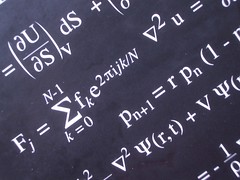 |
My joint paper with K. Grabowska and J. Grabowski entitled “Higher order mechanics on graded bundles” has now been accepted for publication in Journal of Physics A: Mathematical and Theoretical. The arXiv version is arXiv:1412.2719 [math-ph]. |
I am very happy about this as it is my first joint paper to be published. The paper presents some novel and interesting ideas on how to geometrically formulate higher order mechanics, hopefully our expected applications will be realised.
One interesting possible application, as pointed out by one of the referees, is computational anatomy; this is the quantitative analysis of variability of biological shape. There has been some applications of higher derivative mechanics via optimal control theory to this discipline [1].
We were not thinking of such applications in the biomedical sciences when writing this paper. For me, the main motivation for higher order mechanics is as a toy model for higher order field theories and these arise as effective field theories in various contexts. It is amazing that these ideas may find some use in ‘more down to Earth’ applications. However, we will have to wait and see just how the applications pan out.
You can read more about the preprint in an earlier blog entry.
References
[1] F. Gay-Balmaz, D. Holm, D.M. Meier, T.S. Ratiu & F. Vialard, Invariant higher-order variational problems, Comm. Math. Phys. 309(2), (2012), 413-458.